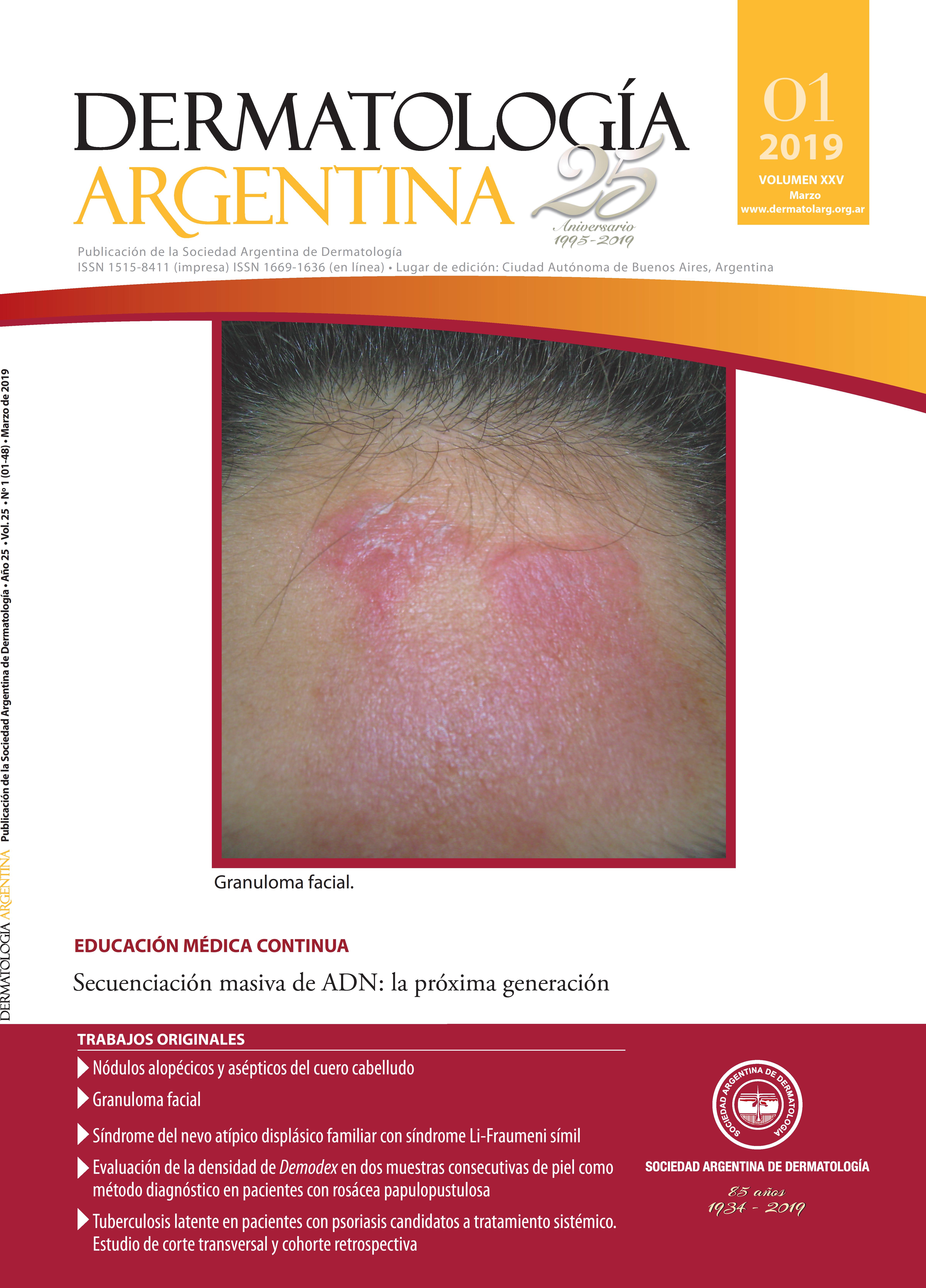Pachyonychia congenita associated with mutation of the KRT16 gene
Keywords:
pachyonychia congenita, palmoplantar keratoderma, KRT16 gene, nail dystrophy, plantar painAbstract
Pachyonychia congenita it belongs to a heterogeneous group of genetic disorders known as palmoplantar keratodermas, which are characterized by the thickening of the skin of palms and soles. Is a rare genodermatosis, of autosomal dominant inheritance. A male patient with palmoplantar keratodermas and mucous membrane compromised, with a missense mutation in KRT16 is presented.
References
I. Has C, Technau-Hafsi K. Palmoplantar keratodermas: clinical and genetic aspects. J Dtsch Dermatol Ges 2016;14:123-139.
II. McLean WH, Hansen CD, Eliason MJ, Smith FJ. The phenotypic and molecular genetic features of pachyonychia congenita. J Invest Dermatol 2011;131:1015-1017.
III. Smith FJD, Hansen CD, Hull PR, Kaspar RL et ál. Pachyonychia congenita. GeneReviews® [Internet]. 2006 Jan 27 [Updated 2017 Nov 30].NCBI Bookshelf.
IV. Della Giovanna P. Queratinas. Actualización. Arch Argent Dermatol 2003;53:83-85.
V. Spaunhurst KM, Hogendorf AM, Smith FJD, Lingala B, et ál. Pachyonychia congenita patients with mutations in KRT6A have more extensive disease compared with patients who have mutations in KRT16. Br J Dermatol 2012;166: 875-878.
VI. Fu T, Leachman SA, Wilson NJ, Smith FJD, et ál. Genotype– phenotype correlations among pachyonychia congenita patients with K16 mutations. J Invest Dermatol 2011;131:1025-1028.
VII. Goldberg I, Fruchter D, Meilick A, Schwartz ME, et ál. Best treatment practices for pachyonychia congenita. J Eur Acad Dermatol Venereol 2014;28:279-285.
VIII. Hickerson RP, Leake D, Pho LN, Leachman SA, et ál. Rapamycin selectively inhibits expression of an inducible keratin (K6a) in human keratinocytes and improves symptoms in pachyonychia congenita patients. J Dermatol Sci 2009;56:82-88.
Downloads
Published
Issue
Section
License
El/los autor/es tranfieren todos los derechos de autor del manuscrito arriba mencionado a Dermatología Argentina en el caso de que el trabajo sea publicado. El/los autor/es declaran que el artículo es original, que no infringe ningún derecho de propiedad intelectual u otros derechos de terceros, que no se encuentra bajo consideración de otra revista y que no ha sido previamente publicado.
Le solicitamos haga click aquí para imprimir, firmar y enviar por correo postal la transferencia de los derechos de autor












